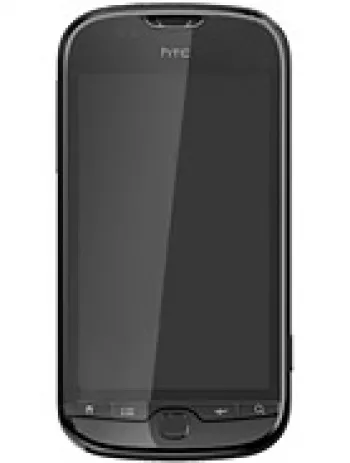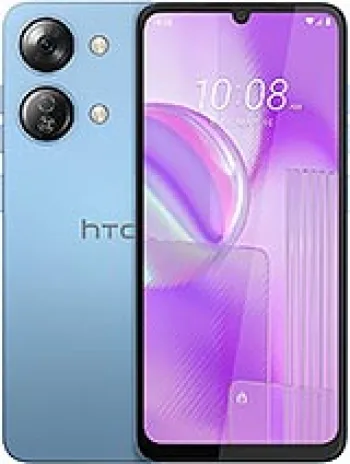
Introduction
The HTC HD Mini, first introduced in 2010, was a compact smartphone that captured the essence of its era through a blend of design and functionality. Despite being discontinued, it remains a device of interest to tech enthusiasts and consumers who appreciate the early days of smartphones. In this article, we delve deep into the various aspects of the HTC HD Mini, from its design to performance, software, and user experience.
Design and Build
The HTC HD Mini boasts a compact design, measuring 103.8 x 57.7 x 11.7 mm and weighing just 110 grams. This makes it lightweight and easy to carry, fitting comfortably in the user's hand. The phone features a Mini-SIM slot and comes in a classic black color, adding to its sleek and understated aesthetic.
Display
Equipped with a 3.2-inch TFT screen offering a 65K color display, the HTC HD Mini provides decent visual clarity. The resolution of 320 x 480 pixels ensures that images and text appear relatively sharp, though not at the high-definition levels seen in modern smartphones. The Corning Gorilla Glass offers added protection against scratches, enhancing the durability of the screen. With a screen-to-body ratio of approximately 50.9%, it strikes a balance between screen size and portability.
Performance
At the heart of the HTC HD Mini is the Qualcomm MSM7227 Snapdragon S1 chipset, coupled with a 600 MHz ARM 11 CPU and an Adreno 200 GPU. While these specifications may seem modest by today's standards, they were quite capable for a 2010 smartphone. The device was designed to handle basic tasks such as browsing, texting, and taking calls efficiently. It includes 384MB of RAM, which supports multitasking for the apps available at the time.
Memory and Storage
The HTC HD Mini comes with 384MB RAM and 512MB of ROM, which was typical for smartphones from that time. A significant feature is its microSDHC card slot, allowing users to expand storage up to 32GB. This was particularly useful for those who wanted more space for photos, music, and other media files.
Camera Features
The single 5 MP autofocus camera is sufficient for capturing basic images and videos. It supports video recording at 480p@30fps, which is decent for personal use, especially when no better options were available in compact formats at the time. While it lacks advanced features like image stabilization or multiple lenses, it serves its purpose for users wanting to capture moments on the go.
Sound and Multimedia
The HTC HD Mini features a built-in loudspeaker and a 3.5mm headphone jack, allowing users the convenience of personal listening or sharing music with others. The stereo FM radio with RDS adds an extra layer of media functionality, appealing to those who enjoyed listening to live broadcasts without relying on mobile data.
Connectivity Options
The phone supports a range of connectivity options, including GSM / HSPA network technology, ensuring reliable communication through 2G and 3G bands. It offers a speed of up to HSPA 7.2/2 Mbps, which was standard for efficient data transfers at the time. Other features include Wi-Fi 802.11 b/g, Bluetooth 2.1 with A2DP, GPS with A-GPS, and microUSB 2.0 for data syncing and charging.
Battery Life
The HTC HD Mini is powered by a removable Li-Ion 1200 mAh battery. The battery supports up to 340 hours of standby time on 2G and up to 500 hours on 3G. Talk time can reach up to 6 hours and 40 minutes on 2G and up to 7 hours and 15 minutes on 3G. With its music play capacity of approximately 12 hours, the phone provides ample usage time for moderate daily activities.
Operating System and User Interface
Running on Microsoft Windows Mobile 6.5.3 Professional, the HTC HD Mini includes the Sense UI for a more intuitive user experience. The operating system was designed to be flexible and user-friendly, offering a range of features suited to both business and personal use. Although outdated compared to contemporary systems, it served well for efficient task management and customization during its peak years.
Sensors and Browser
The HTC HD Mini comes equipped with an accelerometer and proximity sensor, enhancing the phone's usability and user interaction. The HTML browser supports conventional web browsing, providing access to a wide variety of internet services available at the time.
User Experience and Legacy
Despite its simplifications compared to modern devices, the HTC HD Mini offered a well-rounded user experience with adequate power for its era. Its robust build quality, reliable performance, and functionality made it a popular choice for those seeking a compact and capable mobile device. The integration of essential features alongside smartphone technology that was cutting-edge at its release ensures its place in the history of mobile technology innovation.
Conclusion
The HTC HD Mini exemplifies the technological advancements and design ethos of early smartphones. While it may not compete with today's advanced devices in terms of features or power, it remains a noteworthy example of smart design and engineering from the early 2010s. Its influence continues to be felt in the design and function of compact smartphones even now.
Key Features of HTC HD mini
- Compact and lightweight design (110 g, 3.88 oz)
- 3.2-inch TFT display with Corning Gorilla Glass protection
- Microsoft Windows Mobile 6.5.3 Professional with Sense UI
- Qualcomm MSM7227 Snapdragon S1 chipset
- Expandable storage via microSDHC card slot
- 5 MP autofocus main camera with 480p video recording
- Standard 3.5mm headphone jack
- Supports Wi-Fi 802.11 b/g and Bluetooth 2.1 with A2DP
- GPS with A-GPS support for location services
- Removable Li-Ion 1200 mAh battery with decent standby and talk time
- FM radio with RDS support
HTC HD Mini Drawbacks
- Limited network technology: Only supports GSM/HSPA, no LTE support.
- Discontinued model, which may lead to lack of support and updates.
- Small display size of 3.2 inches with low resolution at 320 x 480 pixels.
- Outdated OS: Runs on Microsoft Windows Mobile 6.5.3 Professional.
- Low-performance hardware: Equipped with a 600 MHz ARM 11 CPU.
- Limited internal storage with 384MB RAM, making multitasking challenging.
- Basic camera capabilities with a single 5 MP main camera lacking advanced features.
- No front-facing camera for selfies or video calls.
- Low battery capacity of 1200 mAh, which may result in shorter battery life.
- Limited app ecosystem due to outdated Windows Mobile platform.






View Also
More Phones
All Rights Reserved +14266 Phones © Mobilawy 2025

























